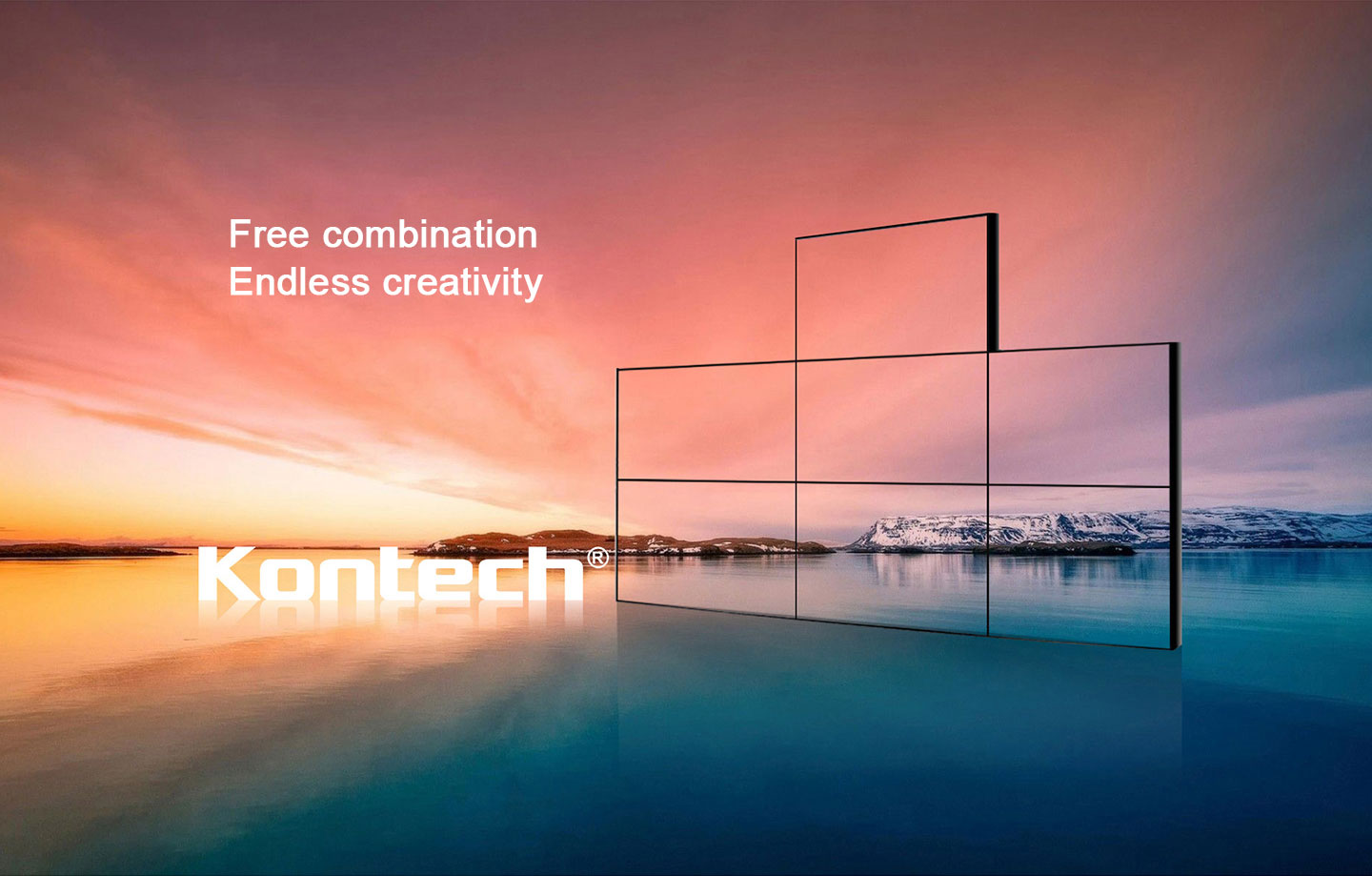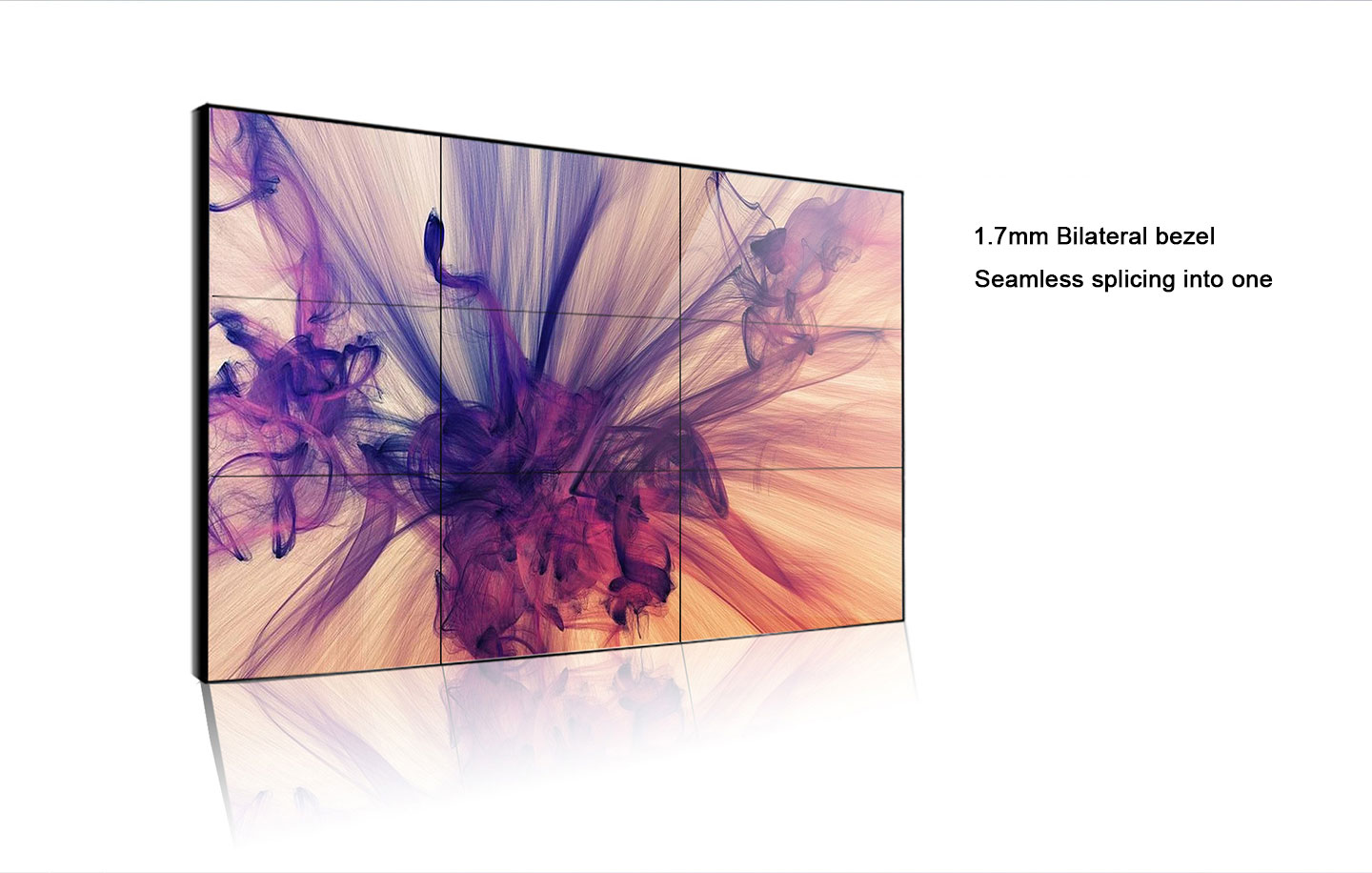HOT SEARCH: Outdoor TV Waterproof TV Mirror TV

What are the advantages of LCD splicing screens?
1. High brightness
Compared with ordinary display screens, LCD splicing screens have higher brightness. The brightness of a regular display screen is generally only 250-300cd/㎡, while the brightness of a LCD splicing screen can reach 700 cd/㎡ or higher.
2. Image processing technology
The LCD splicing screen can enable clear reproduction of low pixel images on a full HD display screen; Deinterlacing processing technology to eliminate flicker; Deinterlacing algorithm to eliminate "aliasing"; Dynamic interpolation compensation, 3D comb filtering, 10 bit digital brightness and color enhancement, automatic skin color correction, 3D motion compensation, nonlinear scaling, and other internationally leading technology processing.
3. Better color saturation
At present, the color saturation of ordinary LCD and CRT is only 72%, while DIDLCD can reach 92% of High color saturation. This is thanks to the professional development of color calibration technology for products. Through this technology, in addition to color calibration for still images, it can also calibrate colors for dynamic images, ensuring the accuracy and stability of image output.
4. Uniform brightness
Due to the fact that every point on the LCD splicing screen maintains the same color and brightness after receiving the signal, unlike regular displays that require constant pixel refresh. Therefore, the LCD splicing screen has uniform brightness, high image quality, and absolutely no flicker.
5. Long service life
The service life of the backlight source for ordinary display screens is 10000 to 30000 hours, while the service life of the backlight source for high brightness LCD splicing screens can reach over 60000 hours. This ensures the consistency of brightness, contrast, and chromaticity for each LCD screen used in splicing displays after long-term use, and ensures that the service life of the LCD screen is not less than 60000 hours. LCD display technology does not have any consumables that require regular replacement, so maintenance and repair costs are extremely low.

The biggest drawback of LCD splicing screens is that they have black edges and gaps.
Can the LCD splicing screen be seamlessly spliced?
Due to the limitations of LCD technology, it is not possible to remove the border, but it can achieve seamless visual stitching display effect. In the original LCD technology, external technology is used to eliminate black edges, thereby achieving high-definition display and seamless splicing. In the past, LCD splicing screens were commonly used in the field of security monitoring, with each screen displaying at least one or more images. The requirements for splicing were not high, and conventional 5.5mm or 3.5mm splicing could meet the display requirements.
In recent years, more and more display occasions have higher requirements for large screen display effects, and LCD splicing screens have been popular in many industries, such as conference rooms, exhibition halls, business halls, shopping malls, etc. Because LCD splicing screens have higher resolution and better display effects than LED displays, they are more popular in these applications. However, LCD splicing screens also have some drawbacks, that is, there will be a certain distance between the screens, which will have a certain impact on the visual experience.
At present, ultra narrow edge stitching can achieve a border of 0.88mm. Although it has decreased significantly compared to previous years, there will still be a small black border, which is not good enough for many users. However, if LED display is used, the resolution is low, the brightness is too high, and it cannot be viewed for a long time, so it is necessary to introduce seamless splicing screen technology.

What technologies can achieve seamless LCD splicing screens?
1、Optical seamless splicing screen technology
Using the principle of light refraction to achieve seamless display is different from LFD electronic compensation technology. Simply put, it means adding a specially customized optical glass in front of the LCD splicing screen, and then achieving seamless splicing through light refraction. This type of glass not only has a unique craftsmanship, but also has all four sides. It can be integrated with the LCD screen to achieve refraction, presenting a seamless effect through the refraction of light and perspective.
2、Electronic seamless splicing screen technology
Implemented using the fusion technology of LCD screen and LED. A transparent light emitting body composed of small pitch LEDs has been added to the border of the LCD splicing screen, which is controlled by the splicing machine processor to restore the blocked image of the LCD, thus achieving the principle of synchronous lighting and removing seams. The key point of this technology is how to integrate small pitch LED and LCD to achieve uniform brightness, because the brightness of small pitch LED is generally higher, and only by achieving uniform brightness can the display be more uniform.
The seamless display of LCD splicing screen is a high standard display pursuit of many users, especially in conference rooms, business halls, exhibition halls, Big data display platforms and other occasions. Users have higher requirements for the overall display of images, so seamless splicing of screens can better meet people's needs

Prediction of the Industry's Future Demand for High Definition LCD Splicing Screens
High definition LCD splicing screens will become increasingly popular in the future for the following reasons
1. The splicing of high-definition LCD screens is moving towards seamless, digital high-definition, and networking,
2. Large scale, modularization, intelligence, and easy installation.
3.As the most economical, practical, and reliable large screen terminal display device at present, the emergence of high-definition LCD splicing completely solves the defects such as burns, damage, and maintenance difficulties that are easily caused by various traditional consumables.
4.With the rapid development of internet information technology, the visibility of information is becoming increasingly common.
Therefore, in order to comprehensively, real-time, and conveniently display video information of various systems, remote real-time commands, scheduling, monitoring, teaching, meetings, etc. are required. For long-term and semi fixed image engineering applications, high-definition LCD splicing screen large screen display applications are provided for their needs, which is also a historic innovation in terminal display devices.
Through the high-definition LCD splicing screen large screen display system, it can comprehensively display production scheduling, video images, computer images, and other information, forming a set of fully functional and technologically advanced information management and display systems that meet the monitoring requirements, production scheduling, and various usage requirements of other applications; And provide an interactive and flexible usage system for these usage needs to adapt to the continuous development of subsequent production, scheduling, meetings, and other work, and to make timely judgments and processing, thus achieving the purpose of monitoring and centralized control supervision. Taking Kangrong Electronics' high-definition LCD splicing screen as an example, the display system of the high-definition LCD splicing screen large screen display system is specially designed for users based on their usage scale requirements. It covers the most excellent high-definition LCD splicing screen narrow edge splicing processing technology, high-definition digital display technology, signal switching technology, multi-screen image processing technology, remote video signal control technology, multi-channel signal processing and other performance parameter matching technologies in the world, making it an advanced large screen display system with high intelligence, high stability, high definition, and simple operation.